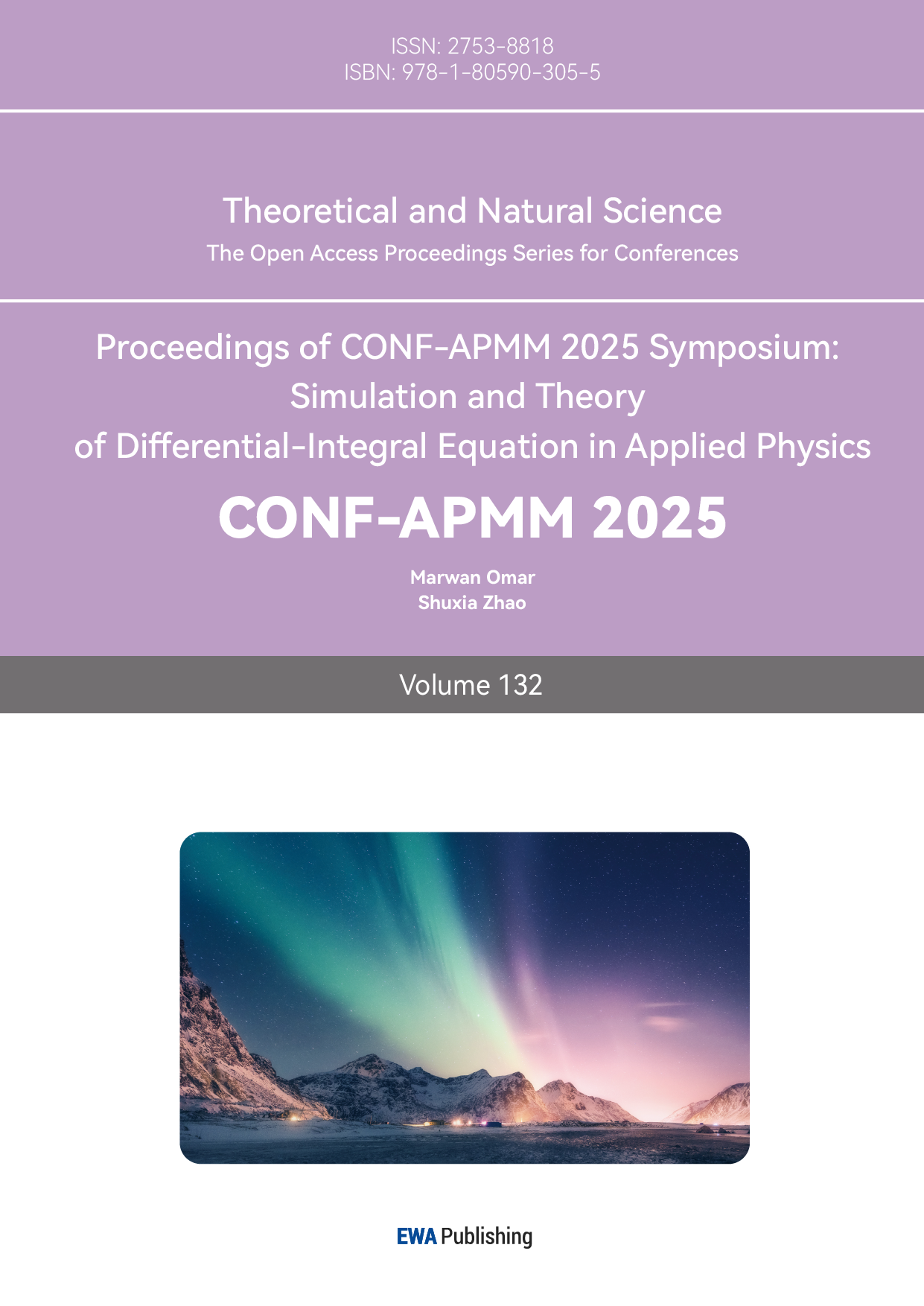References
[1]. American Meteorological Society. (2021, December 20). Weather analysis and forecasting: An information statement of the American Meteorological Society. https: //www.ametsoc.org/ams/about-ams/ams-statements/statements-of-the-ams-in-force/weather-analysis-and-forecasting2/
[2]. Coiffier, J. (2011). Fundamentals of numerical weather prediction (C. Sutcliffe, Tran.; 1st ed.). Cambridge University Press.
[3]. Dodla, V. B. R. (2023). Numerical weather prediction. CRC Press.
[4]. Pratama, A., Oktaviana, A. A., Kombara, P. Y., & Ikhsan, M. I. (2025). The performance of the weather research & forecasting model (WRF) using ensemble method to predict weather parameters. E3S Web of Conferences, 604, Article 04002.
[5]. Blockley, E. W., Martin, M. J., McLaren, A. J., Ryan, A. G., Waters, J., Lea, D. J., Mirouze, I., Peterson, K. A., Sellar, A., & Storkey, D. (2013). Recent development of the Met Office operational ocean forecasting system: An overview and assessment of the new global FOAM forecasts. Geoscientific Model Development Discussions, 6(4), 6219–6278.
[6]. MacLachlan, C., Arribas, A., Peterson, K. A., Maidens, A., Fereday, D., Scaife, A. A., Gordon, M., Vellinga, M., Williams, A., Comer, R. E., Camp, J., Xavier, P., & Madec, G. (2015). Global Seasonal forecast system version 5 (GloSea5): a high‐resolution seasonal forecast system. Quarterly Journal of the Royal Meteorological Society, 141(689), 1072–1084.
[7]. Clare, M. C. A., Jamil, O., & Morcrette, C. J. (2021). Combining distribution‐based neural networks to predict weather forecast probabilities. Quarterly Journal of the Royal Meteorological Society, 147(741), 4337–4357.
[8]. Weyn, J. A., Durran, D. R., & Caruana, R. (2019). Can Machines Learn to Predict Weather? Using Deep Learning to Predict Gridded 500‐hPa Geopotential Height From Historical Weather Data. Journal of Advances in Modeling Earth Systems, 11(8), 2680–2693.
[9]. Pagano, T. C., Casati, B., Landman, S., Loveday, N., Taggart, R., Ebert, E. E., Khanarmuei, M., Jensen, T. L., Mittermaier, M., Roberts, H., Willington, S., Roberts, N., Sowko, M., Strassberg, G., Kluepfel, C., Bullock, T. A., Turner, D. D., Pappenberger, F., Osborne, N., & Noble, C. (2024). Challenges of Operational Weather Forecast Verification and Evaluation. Bulletin of the American Meteorological Society, 105(4), E789–E802.
[10]. Teague, K. A., & Gallicchio, N. (2017). The evolution of meteorology: a look into the past, present, and future of weather forecasting. Wiley Blackwell.



